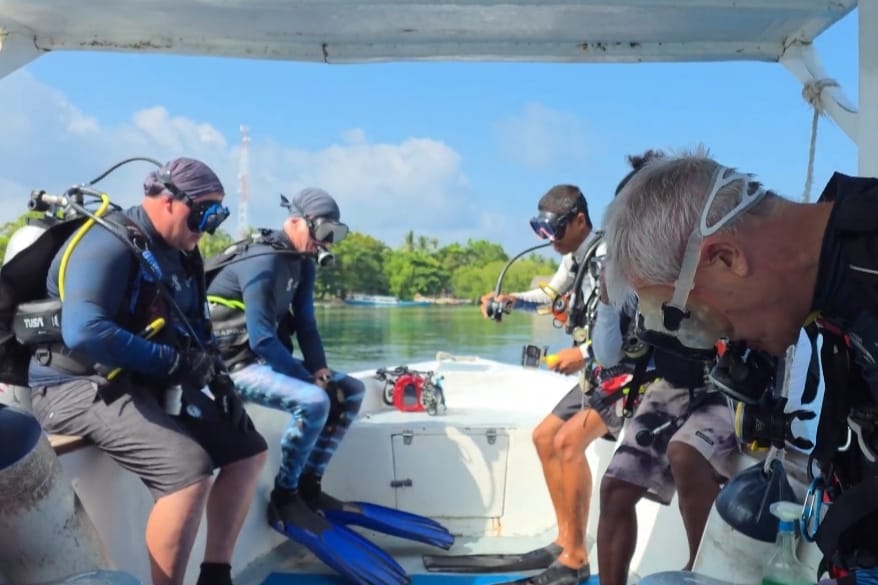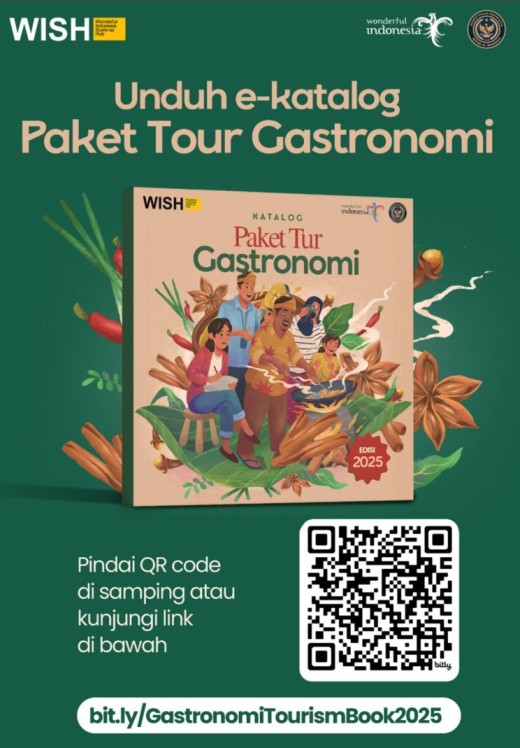Feature – Enjoying sensation of birdwatching at nature park in Indonesia’s Lombok Island

Lombok Island has a variety of attractions ranging from beautiful beaches, underwater wealth, cultural customs, sports tourism, mountains, and nature-based adventure tourism.
Jakarta (Indonesia Window) – Lombok Island has everything, that is why the area which is located in Indonesia’s province of West Nusa Tenggara is made one of the five super priority tourism destinations in the country.
As a tourist destination, Lombok Island has a variety of attractions ranging from beautiful beaches, underwater wealth, cultural customs, sports tourism, mountains, and nature-based adventure tourism, the Ministry of Tourism and Creative Economy/Creative Tourism and Economy Agency said in a written statement quoted by Indonesia Window recently.
Among the flagship tourist sites in Lombok Island is Kerandangan Natural Tourism Park which is as part of the Senggigi Tourism Village area in West Lombok district.
At the park, tourists can explore the forest area which covers 396.10 hectares, enjoy the serene natural atmosphere, and walk through the paths under the shade of tall and shady trees accompanied by heavenly natural songs.
Since it was designated as a nature tourism park in 1992, its management has been by taking into account the needs under the principle of sustainable tourism, and the natural tourism park is also friendly for children.
Twin Princess Waterfall and Swallow Cave have become the main tourist destinations because of their easy access. Visitors only have to walk along the path in the form of a combination of paving blocks and soil for approximately two kilometers.
So, walking with children will be a very fun activity.
For those who want to go on a further adventure, Kerandangan Nature Park offers another prima donna site, namely birdwatching activities in the wild or in the natural habitat of birds.
There are several bird species whose habitat is in the Kerandangan Nature Park, some of which are included in the endangered category such as the Flore Eagle (Nisaetus floris).
There are also Celepuk Rinjani (Otus jolandae) and Chokekakak Necklace-Chocolate (Todiramphus australasia). Both of which are endangered. Apart from that, there are also Kehicap Twig, Cekakak Sungai, King Prawn Blue, and many more.
“A total of 56 bird species have been recorded in this area,” said Wahyudi Amin, an officer at the Kerandangan Nature Park in Lombok Island.
It is this situation that makes the nature park in Lombok Island increasingly popular as one of the preferred destinations for tourists in carrying out nature tourism activities, especially for those who have an interest in animals.
“That’s just a type of bird. The Kerandangan Nature Park is also a ‘home’ to a number of other animals such as snakes and butterflies. There are 11 types of snakes recorded, three of which were venomous, viper and cobra,” Wahyudi noted.
Wahyudi, who was one of the initiators of the development of special interest tourism at the Kerandangan Nature Park in Lombok, previously did not know that the variety of flora and fauna in the nature park has the potential for high tourism selling points.
At that time, at the end of 2012, Wahyudi, who had recently started his job as a contract worker at the Kerandangan Nature Park, met a tourist from Australia coming alone carrying binoculars.
The tourist told Wahyudi that he wanted to see birds flying wild in the area around the Kerandangan Nature Park.
“Then, I accompanied him into the forest. I followed his activities to see birds and enjoyed every appearance (of birds),” Wahyudi said.
A few days later, another tourist came with a camera with a large lens. “The goal is also the same that he wanted to find birds. He is interested in photography,” he added.
From these two brief and sudden experiences, Wahyudi’s mind opened. The existence of animals in the Kerandangan Nature Park is a potential, and if it is developed with a sustainable tourism approach, it would provide bigger economic benefits.
With his experience of going in and out of the Kerandangan Natura Park forest and initial data on bird species totaling only 23, he tried to develop this attraction.
Wahyudi has monitored bird species and their habits, and he then matched the results of his monitoring with his initial data to see whether or not there are birds’ behaviors, locations, or species which have not been recorded. For this activity, Wahyudi is ready to spend the night in the forest.
Wahyudi’s intention to explore potential with a sustainable tourism approach became even stronger when he had a discussion with one of his colleagues from the University of Mataram in West Nusa Tenggara.
Later, West Nusa Tenggara’s Natural Resources Conservation Agency collaborated with the University of Mataram to conduct further research and data collection on the diversity that exists in the Kerandangan Nature Park.
“I was also involved in the team because I memorized the boundary areas, as well as the observation points. From there, we know that until now there are 56 species of birds,” he pointed out.
Now Wahyudi understands more and knows the patterns and habits of animal activities in the area. Some time ago when the Indonesian Ministry of Tourism and Creative Economy’s tourism awareness campaign team was invited to explore the Kerandangan Nature Park.
At several points, Wahyudi asked visitors to focus on paying attention to the movements of a number of twigs. He explained, soon there will be movement of one type of bird. And sure enough, the Cekakak Sungai bird was seen jumping and then disappearing at the end of the tree.
“This area indeed belongs to the bird. Its activity is at this hour (afternoon),” Wahyudi explained.
Wahyudi also often took visitors to the observation point which is not far from the walking trail. By passing a bit of a rocky river which was dry at that time, there was a black net across it. Tourists were asked to squat and peek from behind the net.

Wahyudi then made certain sounds. In the silence, suddenly there was a voice that was so beautiful. Soon, a type of bird approached and showed the exotic colors of its beautiful feathers. What an impressive experience.
Observing the potential, Wahyudi hopes that more and more parties would be aware of the large selling value of tourism in the Kerandangan Nature Park, especially people who live in the surrounding the area.
He admits that it’s not easy, but with the collaboration of many parties, people’s understanding about the nature would improve. So far, said Wahyudi, he still finds people who often catch birds in nature.
“They still don’t realize that with tourism, the economic value of a bird in nature is even greater than in a cage,” Wahyudi stated.
He gave a simple example. Selling birds of a certain type (which are not protected) may provide a fairly high price. However, sales can only be made once. In contrast to offering it in a package of natural tourism activities.
Wahyudi said, for foreign tourists, nature tour packages can be offered at a price of three million – five million rupiahs. (1 U.S. dollar = about 15.000 rupiahs)
“The package can be made many times so the potential is higher. The preservation of nature is maintained,” Wahyudi explained.
He continues to invite the public to be more involved in offering this tour package. So far he has managed to persuade five people from the community to join him.
“With the event (tourism awareness campaign), I hope that more and more people would be open and aware of the potential we have,” he said.
Deputy for Institutional Resources at the Ministry of Tourism and Creative Economy, Diah Martini Paham, said strengthening human resource capacity is very important in an effort to provide excellent service for tourists, especially to create quality and sustainable tourism.
This Tourism Awareness Socialization Campaign should be presented so that people are able to recognize, develop, and market the potential that exists in their areas.
“The way to prepare people to be good hosts in the implementation of tourism and creative economy can make them do things and at the same time benefit from tourism activities,” said Diah who was accompanied by the Director of Human Resources Development of the Ministry of Tourism and Creative Economy Florida Pardosi.
The Minister of Tourism and Creative Economy/Head of the Tourism and Creative Economy Agency, Sandiaga Salahuddin Uno, said sustainable tourism is the latest trend in the development of the world tourism and creative economy sector in Indonesia.
“We see that sustainable tourism is a tourism trend that is now unstoppable and irreplaceable. Because sustainable tourism opens up opportunities for us to further preserve the environment,” according to Sandiaga.
He continues to encourage the active participation of people in creating quality and sustainable tourism through tourist villages in various parts of Indonesia.
He further said the tourism awareness campaign is one of the flagship programs of his ministry as an effort to realize these aspirations, including to increase the capacity of human resources.
“Tourism and the creative economy are sectors that continue to drive economic revival and open jobs for the people,” Sandiaga added.
Editing by Indonesia Window

.jpg)








